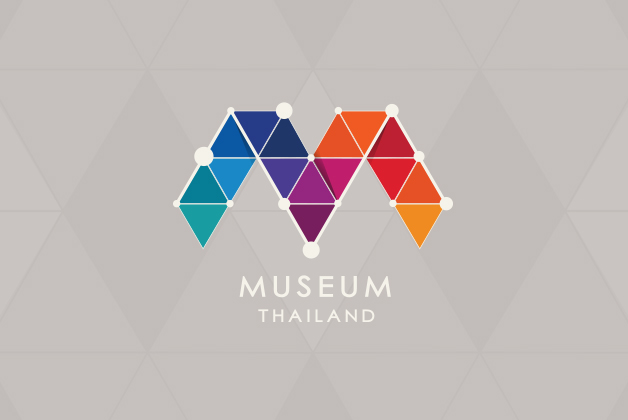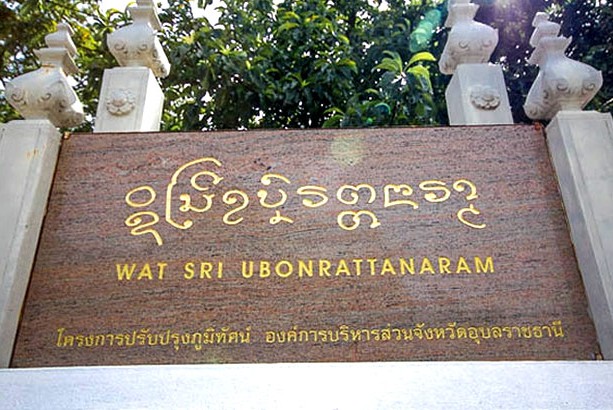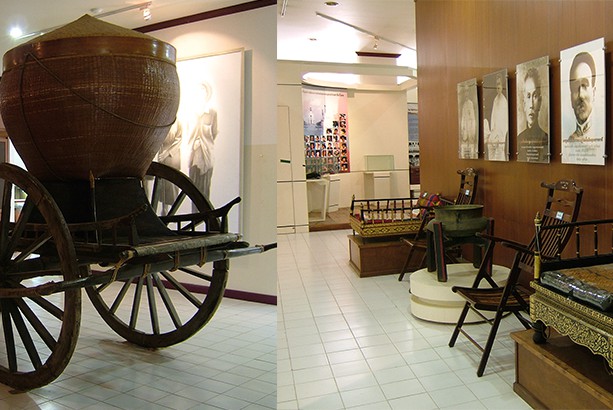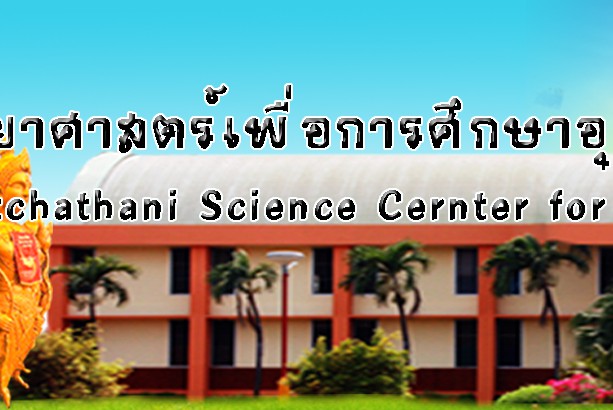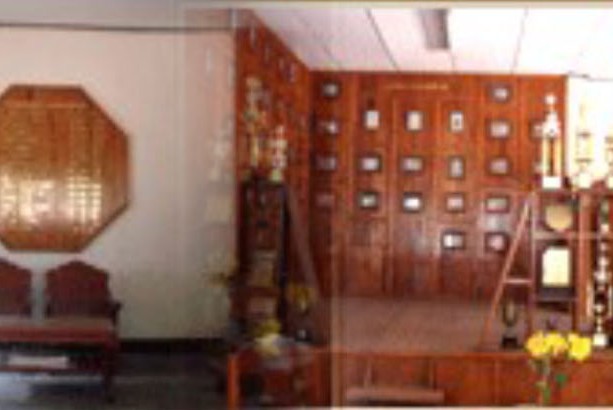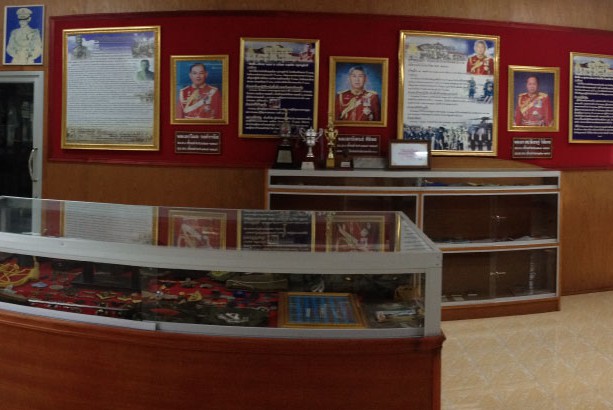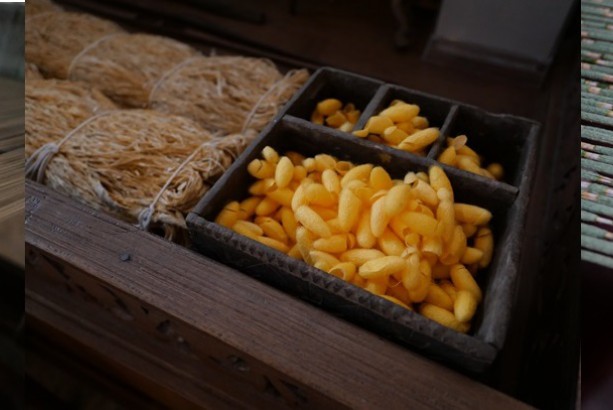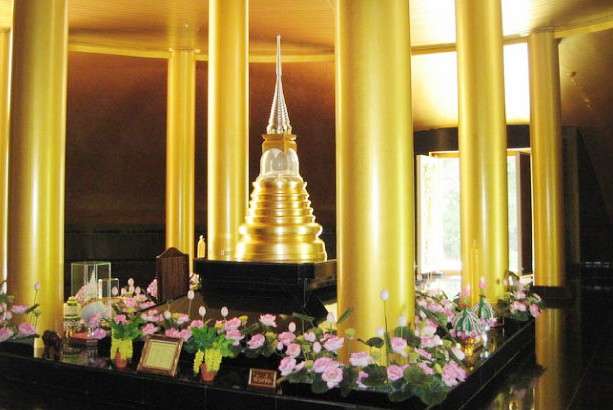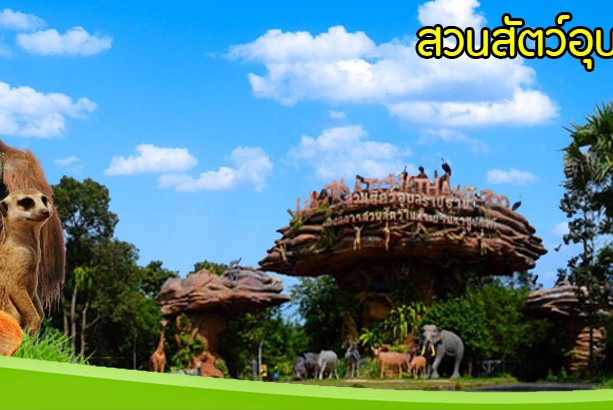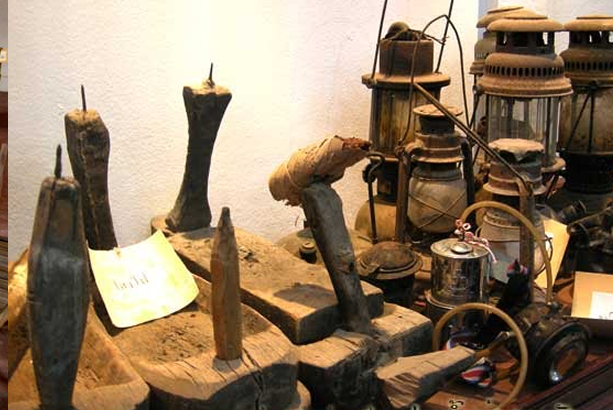Gallery
Information
Ubon Ratchathani National Museum was established in accordance with the aim of modern museum development, in response to the community demand as a learning center, promote local cultures and arts, also provide an education support about culture, history, archeology, and art in the Lower Northeast Region of Thailand.
Ubon Ratchathani National Museum Building was awarded Architectural Heritage Conservation award in 1989 by the Association of Siamese Architects under Royal Patronage. The Department of Fine Arts registered and designated as a national historic site in the year 2001
The exhibition focuses on Ubon Rachatani, especially its geography, geology, history, archaeology, local cultures as well as ethnics. The exhibition is divided into 10 rooms as follows:
Room no.1 General information of the province
Exhibits Overview of Ubon Ratchathani. Map showing location, Zoning politics and transportation, Province seal, Photos of attractions and landmarks, both cultural and natural.
Room no.2 The northeastern geography and geology
Displaying information terraforming Plateau geology map various fossils, Dinosaur's Story, Rock and mineral samples, and gem mining in the province of Ubon Ratchathani and so on.
Room no.3 Pre-historic information
The exhibit includes artifacts and archaeological evidence of prehistoric stone tools found in the province of Ubon Ratchathani, such as drums enormously pottery shapes, appliances and jewelry, bronze Including weapons made of bronze and steel. The wall paintings are replicas of the paintings, Cliffside points. This is a painting major in Khong Chiam. Province
Room no.4 The beginning of the history including Dharavadhi culture and Jenla culture (ancient Khmer) from the 12th to 15th Buddhist century.
Exhibits Jenla cultural artifacts or Khmer culture, before the Angkor, and Dvaravati culture dating back to historic period, the most important antiquities is an Atthanarisuan aged around 13 Buddhist Centuries, founded in Ubon Ratchathani, carved as gods Shiva and Uma, his goddess wife in the same sculpture, which both are revered deities in Hinduism. It also offers Khmer style door columns, Buddha image and sandstone parapet, etc.
Room no.5 The Khmer cultures from the 15th to 18th Buddhist century.
The exhibit artifacts that influenced Khmer Angkor period, aged around 15-18 Buddhist Centuries, Khmer art form like the Ganesh Kerguelen Islands. The lintel as Kampong Phra style, a Papuan lintel, Siwa Leung with Sandstone Ornamental and architectural pieces from important archaeological sites in the provinces, including carvings of deities interplanetary of Ban Ben mansion, and so on.
Room no.6 Thai-Laotian cultures
Showcasing antiques, art objects Culture in Thailand - Laos During the 23-25 Buddhist Centuries, highlighted by different post of Buddha, either made of wood, stone, bronze and gilded. Interesting antiques include Laos art bronze casted Buddha image, with the inscription at the base denotes the wrought was by the Prince Anuwong in 1826, the statue of this Buddha is very beautiful.
Room no.7 Local Ubolrachateen’s fabrics
Showcasing antiques, art objects Woven fabrics of ancient and native of Ubon Ratchathani's skirt for hi-class ladies, cotton and silk weaving in various patterns.
Room no.8 Local music.
Displaying information about local music. By modeling the actual size of musicians Northeastern. Playing different instruments Most of the instruments derived from natural materials. Instruments like harp strings strum harps, two, three instruments such as fiddle bows with various percussion pieces, such as Pong Lang Dance, Mak Gab Gab play.
Room no.9 Local handicraft and household tools.
Exhibits handicraft Household appliances such as brass appliances, Ban Pa Aw folk art, With procedures, such as betel brass, urn, sock, Mak, Khan. Including a unique wood betel and North Eastern areca nuts. In addition, Exhibits various tools, such as Lob, Shai, nets for fishing, and all furtively and kitchenware that can be found in the current lifestyle as Kratib, rice steamer, steamed sticky rice mortar, Kong rice and Coconut grater, etc.
Room no.10 Governmental systems and religious works of art
Exhibits the rule of Ubon Ratchathani, before the reform in the reign of King Rama V. Photo exhibition of important people, appliance used by Ubon Ratchathani’s governors, and also artifacts of interest. A fine arts in Buddhism, Includes supplies that are believers consecrated by Buddhist temples in Ubon Ratchathani, such as chest, pulpit, preaching picture, Prab cabinet, exodus, rail bathing, candle stand for palm leaf books on Bible leaves and etc.
Management
Organization Museum
Important / Interesting artifacts
Atthanarisuan a Sanstone sculpture, aged around 13 Buddhist Centuries, founded in Ubon Ratchathani, carved as gods Shiva and Uma, his goddess wife, in the same sculpture, sitting flat cross-legged position on upside lotus base. Considered to be the oldest Atthanarisuan, as found in Southeast Asia, with its quite special anatomical detail of accessories. The large size of earring is similar to the shape of the first phase Cham sculpture, such as a giant image of Kyo seal in the Danang Museum, Vietnam. The skirt look like the one of Shiva's in the Mizon A1 historic site
Ganesh a Sanstone sculpture , aged around 15 Buddhist Centuries, generally look like incompleted in detail carved sculture, the dress like a sculpture in Khmer art form Kerguelen Islands National Park. Compare to the Ganesh from Basak and from Prasat Muang Tam temple.
Map
Address And Contact Number
Telephone : 045-251 015
Fax : 045-255 071
Website : http://www.virtualmuseum.finearts.go.th/ubonratchathani
Email : ubonnationalmuseum@gmail.com
Operating hours
Wednesday - Sunday from 09.00 - 16.00 hrs.
Admission fee
Thai citizens 10 baht and Foreigners 30 Baht Students in uniform as well as monks, novices and priests of other religions are exempted from the entrance fee.
Getting There
By car from Bangkok, take Highway no.1 (Phaholyothin) via Saraburi - Nakhon Ratchasima – Buriram – Surin- Sri Saked until Ubon Ratchathani province.
By bus, there are air-conditioned Bangkok- Ubon Ratchathani and Bangkok – Khong Jiam buses leave from Northern Transport station (Mho-Chit 2) everydays, many rounds per day, estimate duration of 10 hrs.
By train, the train leave Bangkok Railway station (Hua Lamphong) to Ubon Ratchathani, serviced with rapid, express and VIP express train, estimate duration of 8.5 - 12 hrs.
By Plane, there are flights from Bangkok - Ubon Ratchathani everydays
Proper for General Public
Proper for Children
Credit Card
Advanced Booking
For group visit, a letter of visiting request must be made in advance.
FACILITY
Available





 ขยายขนาดตัวอักษร
ขยายขนาดตัวอักษร



 เพิ่มระยะห่างตัวอักษร
เพิ่มระยะห่างตัวอักษร

 เส้นช่วยในการอ่าน
เส้นช่วยในการอ่าน
 เน้นการเชื่อมโยง
เน้นการเชื่อมโยง
 ปรับชุดสี
ปรับชุดสี








 NIGHT AT THE MUSEUM FESTIVAL
NIGHT AT THE MUSEUM FESTIVAL  E-Shopping
E-Shopping 
